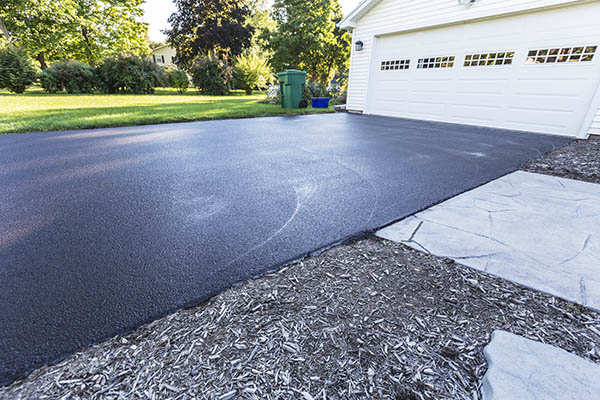Improve Durability with Cold Mix Asphalt: Expert Sealing Solutions
Wiki Article
Cold Mix Asphalt Vs. Hot Mix Asphalt: Which Is Right for You?

Structure Distinctions
Cold mix and warm mix asphalts differ substantially in their make-up, with distinctive characteristics that affect their performance and applications. Cold mix asphalt is generated by emulsifying the asphalt binder with water and an emulsifying agent before mixing it with accumulation. This method allows for the asphalt to be workable at lower temperature levels, making it ideal for short-lived repair services and for usage in cooler weather conditions. Hot mix asphalt, on the various other hand, is produced at high temperatures, usually in between 300-350 ° F, which helps to achieve far better compaction and a much more sturdy last product. The hot mix asphalt manufacturing procedure involves heating the accumulation and asphalt binder independently before combining them at the asphalt plant.
Moreover, chilly mix asphalt has a tendency to be less dense and a lot more versatile than hot mix asphalt. This adaptability makes it better matched for areas with higher levels of activity, such as driveways or roads with heavy traffic. In comparison, hot mix asphalt is recognized for its high durability and resistance to rutting and fracturing, making it a favored selection for freeways and high-traffic roadways where durability is critical.
Installation Process Differences
The process of installing cold mix and hot mix asphalt exhibits significant differences in their treatments and demands. Cold mix asphalt, being a more versatile material, can be used straight from the bag or container onto the fracture or harmed area. It calls for very little preparation work, such as cleaning the area and compacting the cold mix with hand devices. This makes it a convenient alternative for momentary and quick solutions. On the other hand, warm mix asphalt requires a more elaborate installation process. It includes heating up the mix to high temperatures prior to laying it down on a properly ready base. The preparation includes condensing the base, applying a tack layer, and using hefty equipment like pavers and compactors for a sturdy and smooth finish. Due to the home heating requirements, hot mix asphalt installments are generally executed by find more professionals with specific tools, making certain a more structurally audio and irreversible outcome.Resilience and Longevity Aspects
When considering asphalt choices, durability and longevity are critical factors to review for lasting sidewalk efficiency. Warm mix asphalt (HMA) is known for its exceptional sturdiness and long life.
In regards to longevity, HMA normally surpasses CMA as a result of its premium stamina and resistance properties. HMA pavements have a longer life span, requiring less regular repair services and maintenance, which can equate to cost financial savings in the future. In addition, HMA sidewalks are a lot more conveniently personalized to fulfill particular task requirements, additionally enhancing their toughness.
Price Factors To Consider
Thinking about the financial effects is an essential facet when examining the choice in between hot mix asphalt (HMA) and cold mix asphalt (CMA) for sidewalk projects. While the initial cost of warm mix asphalt is commonly higher than that of chilly mix asphalt, HMA typically offers a much more cost-efficient service in the lengthy run due to its superior toughness and longevity.Along with product expenses, it's essential to consider the expenses connected with installation and upkeep when contrasting HMA and CMA. HMA normally needs specific equipment and skilled labor for proper installment, which can affect general job costs. Alternatively, CMA is much easier to work with and can usually be used using simpler strategies, possibly decreasing setup expenses. Eventually, the decision in between HMA and CMA should consider not just the first price but additionally the long-term monetary ramifications to establish one of the most cost-effective option for the details sidewalk job.
Environmental Impact Comparison
Contrast of the environmental impacts in between hot mix asphalt (HMA) and chilly mix asphalt (CMA) discloses unique their explanation differences in sustainability methods. HMA production calls for high temperature levels, leading to boosted power intake and greenhouse gas discharges.Additionally, the use of CMA often entails recycling existing asphalt pavement, promoting source preservation and reducing the quantity of waste sent out to land fills. By opting for CMA over HMA, roadway building tasks can contribute positively to environmental preservation initiatives.
Conclusion
To conclude, the selection between cold mix asphalt (CMA) and warm mix asphalt (HMA) depends on numerous elements such as composition, setup procedure, longevity, longevity, expense, and environmental influence. angle parking. While CMA offers a quick and economical remedy for small fixings, HMA guarantees premium resilience and longevity for heavy traffic locations. Think about these aspects thoroughly to figure out which kind of asphalt is the appropriate choice for your paving requires

Taking into consideration the monetary implications is a critical aspect when assessing the choice in between hot mix asphalt (HMA) and cool mix asphalt (CMA) for pavement tasks. While the preliminary expense of hot mix asphalt is usually higher than that of cool mix asphalt, HMA often gives an extra economical service in the lengthy run due to its exceptional longevity and long life. asphalt repair.Comparison of the environmental influences between warm mix asphalt (HMA) and cool mix asphalt (CMA) exposes unique differences in sustainability practices.In conclusion, the selection between cold mix asphalt (CMA) and warm mix asphalt (HMA) depends on different aspects such as structure, installation procedure, resilience, longevity, cost, and ecological effect
Report this wiki page